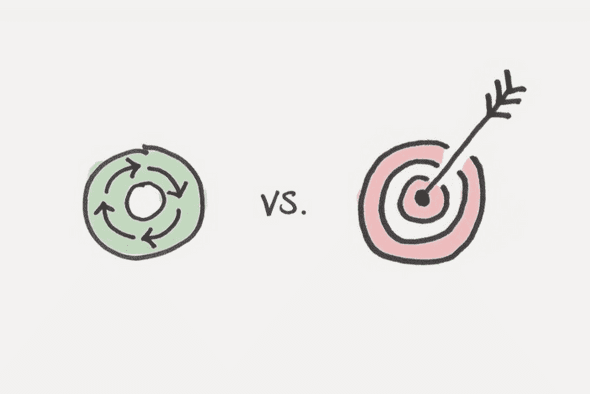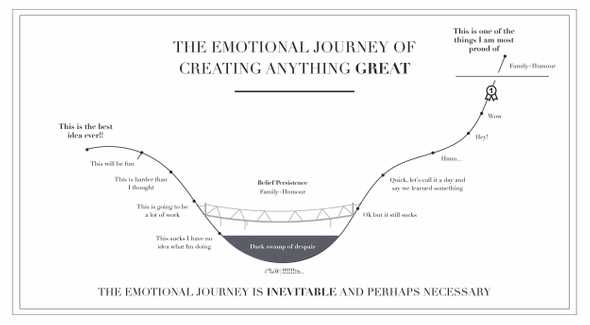A Successful Side-Project: Lessons from Swyx
October 19, 2020 - 5 min
If you are on Twitter, chances are you came across this tweet by Daniel Vassallo
If you’re tempted by this, my advice to first-time creators is to start with a very small product: Something you can finish in 2 weeks and charge $10 for it. The experience of getting paid for something you created, directly by consumers, will change you forever. https://t.co/UbUD9ch4xQ
— Daniel Vassallo (@dvassallo) April 10, 2020
and it now seems everyone is writing a book! 😄
Shawn Wang took this advice and decided to go forth with his Coding Career Handbook (for which I’m grateful! It’s such a great book!). He shares his lessons and regrets in this talk at js.la 📽️, and here are my notes for my future self when I want to ship a side project (for money or not).
The How
There are 4 aspects:
- Pre-selling
- Delivering
- Launching
- Keeping going
Pre-selling - or your own Kickstarter
On the first day of this endeavour, take the time to find a topic, a name and put up a landing page with good marketing copy.
Pre-sell to your friends and close network: they are more likely to ask you about the state of the project and you would hate to disappoint. What’s more, you’ve got their money which you would awkwardly need to return otherwise.
This is probably a good moment to decide which platform(s) you want to use to support the sale of your book. Gumroad and Podia seem to be fairly big players in that space.
If it is your first side project that you would like to ship for money, don’t fret too much over the pricing strategy; it is more of a distraction from writing and completing the project. Sticking to Daniel Vassallo’s recommendation of $10 is probably enough.
Delivering
Thanks to your pre-writing, e.g. gathering notes, writing blog posts, etc., you already have some amount of the material you would like to include in the finished product. If it’s 25%, that means you still need to actually write the other 75%.
If possible, you should continue your “normal” activities, like shipping blog posts about other topics, appearing on podcasts, etc.
As you are writing, document your journey and give away one or two chapters for free as teasers. They’re a showcase for what you’re producing and could lead to podcast interviews for further exposure.
I was sharing my personal journey, lessons and milestones. The best marketing is no marketing. No one wants to be sold anything.
— Alex West, in Two and a half years of building products
Daniel Vassallo’s advice to time box the project to 2 weeks is a very important idea: it is so easy to fall prey to scope creep by adding more and more topics to cover, especially when you are knowledgeable and excited about it! But this may well mean that you will never actually ship it. So harness your enthusiasm to provide an advantage.
Of course, you have the goal to ship that product, but what parts of your day actively contribute to that goal? If you’d like to get anything done, adopting a system to support your goals will go a long way.

Systems > Goals, Source: https://jamesclear.com/goals-systems
Launching
All your efforts are coming to an end… or so you thought. Now is the time to launch your product! This phase requires an entirely different skill set so it’s good to have practice.
Having a great landing page is a must. A good resource on the subject is Rob Hope’s book Landing Page Hot Tips, and you can read Shawn’s review of it too.
Make sure to know the rules of the platforms you’re using to launch: Shawn’s Show HN post was doing very well and directing a lot of traffic to his landing page, but it was sadly taken down as no free sample of the book was available there (despite the blog posts).
If people leave out a negative comment, take this as an opportunity to turn their opinions around.
Shawn recommends watching Adam Wathan’s talk Nailing Your First Launch.
Keeping going
This is still not the end. What comes tomorrow? Next week, next month, next year?
You can “launch” your product multiple times.
You can start a community around your book or product.
One of the biggest mistakes I see founders make is abandoning what already works and trying to take on a bigger challenge before they’re making enough money to develop products full-time.
Instead, focus on replicating the same type of product with another angle or in another market, maybe more than once.
— Rob Walling, in The Stairstep Approach to Bootstrapping
The Why
If you want to go from employee to entrepreneur, it is good to learn without too much risk how to do “business” without all the supports from other departments. For example, as a Software Engineer, you would not be focusing much on attracting leads for your company; there would be a design team and product managers making decisions about the product, etc.
When you’re launching a product on your own, you need to perform in all the roles and learn as you go. Especially when it comes to side-projects, developing a system to support your goals, and improving your discipline and focus.
You will get acquainted with the valley of despair and go through the emotional journey it describes; this is inevitable, and maybe even necessary, to create anything great.

Source: https://john.do/emotional-journey-creating/
This can be daunting but it will most likely be a rewarding experience, at least in terms of skills acquisition if not financially.
Make sure to define in advance your idea of success for this project: is it for the learning experience and to have a published book to your name, is it solely about making X amount of money?
Resources
📽️ Shawn’s talk, Lessons and Regrets From Shipping My $50000 Coronavirus Side Project
📽️ Adam Wathan’s talk, Nailing Your First Launch
📓 Rob Walling, The Stairstep Approach to Bootstrapping
📓 James Clear, Forget About Setting Goals. Focus on This Instead
📓 Alex West, Two and a half years of building products
Personal blog written by Robin Cussol
I like math and I like code. Oh, and writing too.